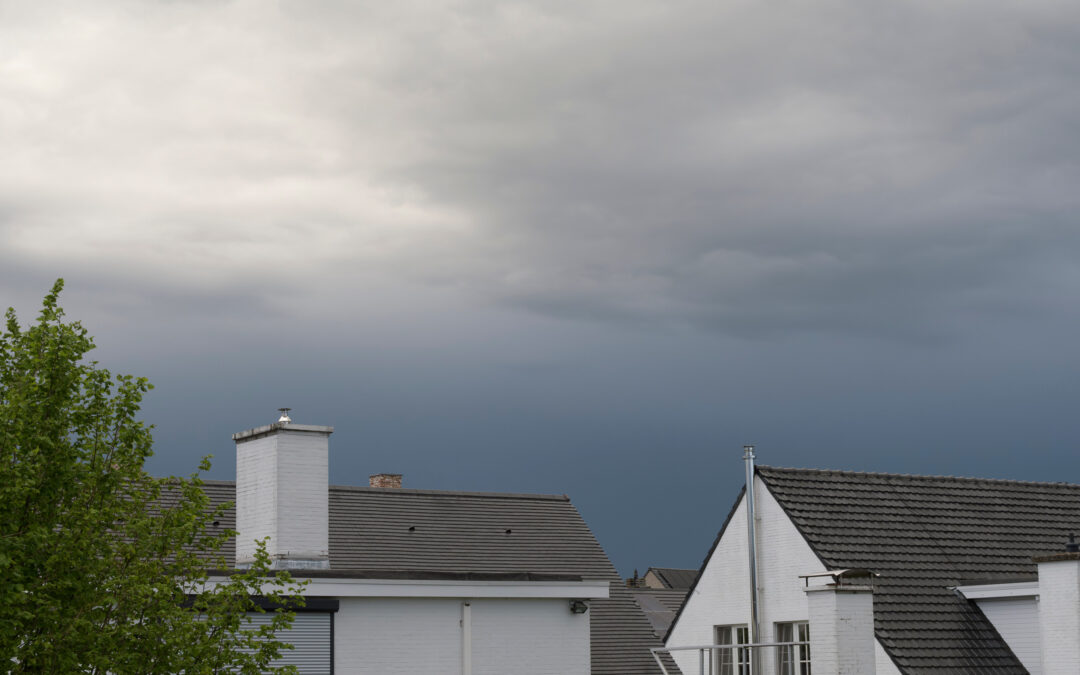If you live in Illinois, you know the weather doesn’t mess around. One day it’s sunny and warm, the next you’re shoveling snow or waiting out a thunderstorm. All that extreme weather? Your roof is taking the brunt of it.
At Holthaus Roofing, we’ve seen firsthand how the changing seasons wear on roofs across the state. Whether you have asphalt shingles, metal panels, slate, Durolast, stone-coated steel, or GAF TPO, your roof is constantly working to protect your home from whatever Mother Nature throws its way.
Here’s a look at how Illinois weather can affect your roof—and more importantly, what you can do to protect it.
Winter: Heavy Snow and Ice Dams
Winter in the Midwest isn’t just cold—it’s brutal. Snow builds up fast and gets heavy, putting serious stress on your roof. But the real issue? Ice dams.
These happen when warm air escapes from your attic, melts the snow on your roof, and causes it to refreeze along the edges. Water gets trapped, and that’s when leaks start sneaking into your home.
How to protect your roof in winter:
- Make sure your attic is insulated and ventilated properly
- Remove excess snow from your roof if it starts to pile up
- Get your roof inspected during or after the season for early signs of stress
Spring: Rain, Wind, and Hail
Spring storms in Illinois can pack a punch. Between driving rain, gusty winds, and the occasional hailstorm, your roof takes a beating. Hail can crack or bruise shingles, wind can rip them off entirely, and water has a way of finding the smallest gaps.
What to do in the spring:
- Walk around your home after a storm and check for missing or damaged shingles
- Look inside for any signs of leaks or water stains
- Clear your gutters so water can drain properly
- Have a roofer check for hidden hail damage if you’ve had a recent storm
Summer: Heat, Humidity, and UV Exposure
When the temperatures spike, your roof is exposed to intense sunlight and high humidity. UV rays slowly break down roofing materials, and all that trapped heat in your attic can warp decking, cause shingle curling, and even mess with your energy efficiency.
Summer roof care tips:
- Make sure your roof is ventilated to release heat and moisture buildup
- Look out for curling or blistering shingles
- Consider reflective or energy-efficient roofing materials when it’s time to replace
Fall: Leaves, Debris, and Prepping for What’s Next
Fall is a bit quieter—but don’t let it fool you. Leaves and debris can clog up your gutters, which leads to poor drainage and eventually water damage. It’s also the perfect time to catch and fix any minor issues before winter rolls around again.
What to do in the fall:
- Clean your gutters regularly
- Trim overhanging branches away from your roof
- Get a pre-winter inspection to catch small problems before snow and ice hit
Stay One Step Ahead with Regular Maintenance
Here’s the truth: you can’t control the weather, but you can control how prepared your roof is. Staying on top of regular inspections and maintenance is the best way to protect your home year-round.
At Holthaus Roofing, we work with all types of roofing systems, and we know what to look for when it comes to seasonal wear and tear. Whether you need a quick repair, a full replacement, or just a little peace of mind, we’ve got your back.
Wondering If Your Roof Is Weather-Ready? Let’s Find Out.
If your roof has been through a few Illinois seasons, it might be time for a checkup. Contact us—we’ll take a look, talk you through what we find, and help you plan the next steps (if any). No pressure, just honest advice.

